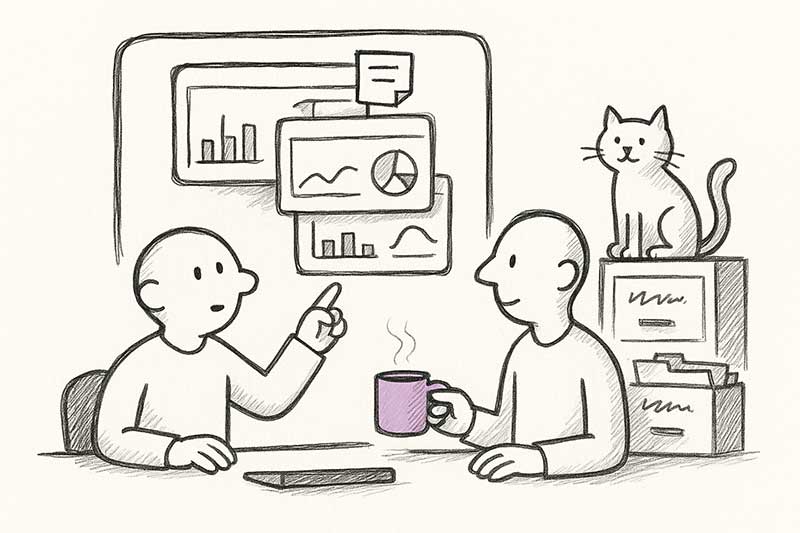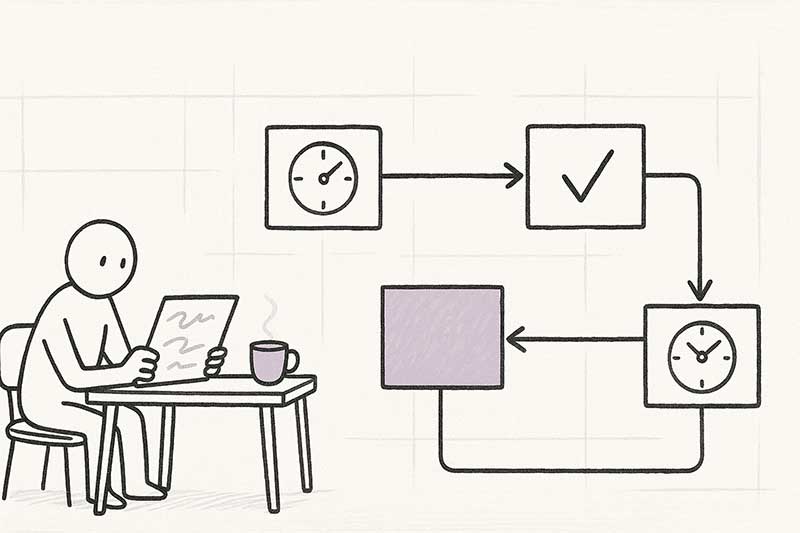OneLake
OneLake is Microsoft’s central data storage system within Microsoft Fabric. It acts as the single place where all an organisation’s analytics data is stored, managed, and accessed. The goal of OneLake is to bring together different types of data and make them easy to use across the entire analytics platform.
What is OneLake?
OneLake is sometimes described as the “OneDrive for data.” Just like OneDrive stores and shares files, OneLake stores and organises data. It holds structured data (such as tables from databases), semi-structured data (like JSON or CSV files), and even unstructured data. Everything is stored in open formats, which makes it easier to share and analyse without moving or copying files.
How OneLake relates to Microsoft Fabric and Power BI
OneLake is the foundation of Microsoft Fabric. Every service in Fabric,such as data engineering, data science, and real-time analytics uses OneLake as its shared storage layer. This means all teams work with the same data, no matter which tool they use.
Power BI, Microsoft’s reporting tool, connects directly to OneLake. With a feature called Direct Lake, Power BI can read data straight from OneLake without needing to import or duplicate it. This makes dashboards faster and ensures everyone sees the same, up-to-date information.
Components of OneLake
Workspaces:
Organisational folders where teams store and manage their data projects.Shortcuts:
Links that allow users to reference data stored elsewhere, such as in Azure Data Lake Storage, without copying it.Items:
The data objects stored in OneLake, including tables, files, and models.Security and governance tools:
Built-in controls to manage permissions, data lineage, and compliance across the organisation.
Benefits of OneLake
Single source of truth:
All analytics data is stored in one place, so everyone uses the same information.No data duplication:
Data can be shared through shortcuts and Direct Lake connections, reducing unnecessary copies.Open and flexible:
OneLake uses open data formats such as Delta Parquet, which can be used by many tools.Simplified management:
Teams do not need to maintain multiple storage systems or integrations.Integration with Microsoft tools:
Works seamlessly with Power BI, Azure, and other parts of the Microsoft ecosystem.
How OneLake compares to a data warehouse
A data warehouse is a structured database designed mainly for reporting and analysis. It usually stores cleaned and organised data in tables. OneLake goes a step further. It combines the structure of a data warehouse with the flexibility of a data lake, which can store raw and varied data types.
In simple terms, OneLake is a unified platform that brings both ideas together. It provides the reliability and speed of a warehouse and the openness and scalability of a lake. This hybrid approach, often called a lakehouse, helps organisations handle all their analytics in one environment.
With OneLake, you don’t need a separate, traditional data warehouse. OneLake is designed to take over that role but in a more flexible way. You can think of it as the storage foundation on which you can build your warehouse and other data layers.
Here’s how it works in simple terms:
OneLake itself is just the storage layer. It holds all kinds of data, raw, semi-processed, and refined. At first, that data can be “messy,” because OneLake collects it directly from different systems (ERP, CRM, Excel files, and so on). The next step is to go from pure storage more structured data.
The modelling happens on top of OneLake. Inside Microsoft Fabric, you can create different layers or areas that act like a data warehouse. For example:
A bronze layer holds raw data (exactly as it comes from source systems).
A silver layer contains cleaned and structured data.
A gold layer holds business-ready tables that behave just like a traditional data warehouse.
These layers are built using Fabric’s Warehouse or Lakehouse features, which both use OneLake underneath. The data doesn’t need to move anywhere, it just becomes more organised as it moves through those logical stages.
Frequently Asked Questions (FAQ) about OneLake
What is OneLake?
OneLake is Microsoft’s central data storage system within Microsoft Fabric. It acts as a single place to store, manage, and access all analytics data across an organisation. It combines the flexibility of a data lake with the structure of a data warehouse.
How is OneLake different from a normal data lake?
A traditional data lake stores large amounts of raw data but often lacks structure or governance. OneLake, on the other hand, adds organisation, security, and sharing features on top of the lake. It allows teams to store both raw and refined data in a structured way, making it easier to use for reporting and analytics.
Do I still need a data warehouse if I have OneLake?
No, you usually don’t need a separate data warehouse. Instead, you can build and model your warehouse inside OneLake. Microsoft Fabric lets you organise data into layers, raw, cleaned, and business-ready that work just like a traditional warehouse but without extra storage systems.
Is the data in OneLake messy?
At first, yes. When it is loaded, data may come in raw form from different systems. But Fabric tools allow you to clean, transform, and structure it within OneLake. Over time, it becomes organised into reliable tables ready for analysis.
How does OneLake relate to Microsoft Fabric?
OneLake is the foundation of Microsoft Fabric. Every service in Fabric, such as data engineering, data science, and Power BI, uses OneLake as its shared storage layer. This means all teams work with the same data, reducing duplication and confusion.
How does OneLake work with Power BI?
Power BI connects directly to OneLake using a feature called Direct Lake. This allows Power BI dashboards to read data straight from OneLake without copying or importing it, which improves performance and keeps reports up to date.
What types of data can be stored in OneLake?
OneLake can store structured data (tables, CSV files), semi-structured data (JSON, XML), and unstructured data such as logs or documents. It uses open file formats like Delta Parquet, which can be accessed by many tools.
How is data organised inside OneLake?
Data in OneLake is stored in workspaces, which are like project folders. Within each workspace, you can create items such as warehouses, lakehouses, or notebooks. Shortcuts allow you to reference external data sources without making extra copies.
What are the main benefits of using OneLake?
The key benefits are:
One central source of truth for all data.
No need to copy data between tools or teams.
Works with open formats for flexibility.
Integrated security, permissions, and governance.
Seamless connection to Power BI and other Microsoft services.
Is OneLake suitable for all organisations?
Yes, OneLake is designed for companies of all sizes that use Microsoft tools. It is especially useful for organisations that want to simplify their data architecture and bring all analytics activities into one connected environment.
Related Terms
Data Warehouse
A data warehouse is a central system that collects and organises data from diffe...
Microsoft Fabric
Microsoft Fabric is an all-in-one cloud platform that brings data storage, trans...
Power Bi
Power BI is Microsoft’s business intelligence tool that helps people understand ...
Power BI Enhanced Report Format (PBIR)
PBIR is the new default file format for Power BI reports. Instead of storing eve...
Power BI Project (PBIP)
PBIP is the folder-based project format for Power BI. Instead of storing everyth...

Version control for Power BI
Simple guide to set up version control for Power BI using PBIP, Git and clean repo structures. Learn...
Nov 20, 2025
How to create an event log for process mining
A step by step guide on how you can create an event log for process mining.
Nov 18, 2025